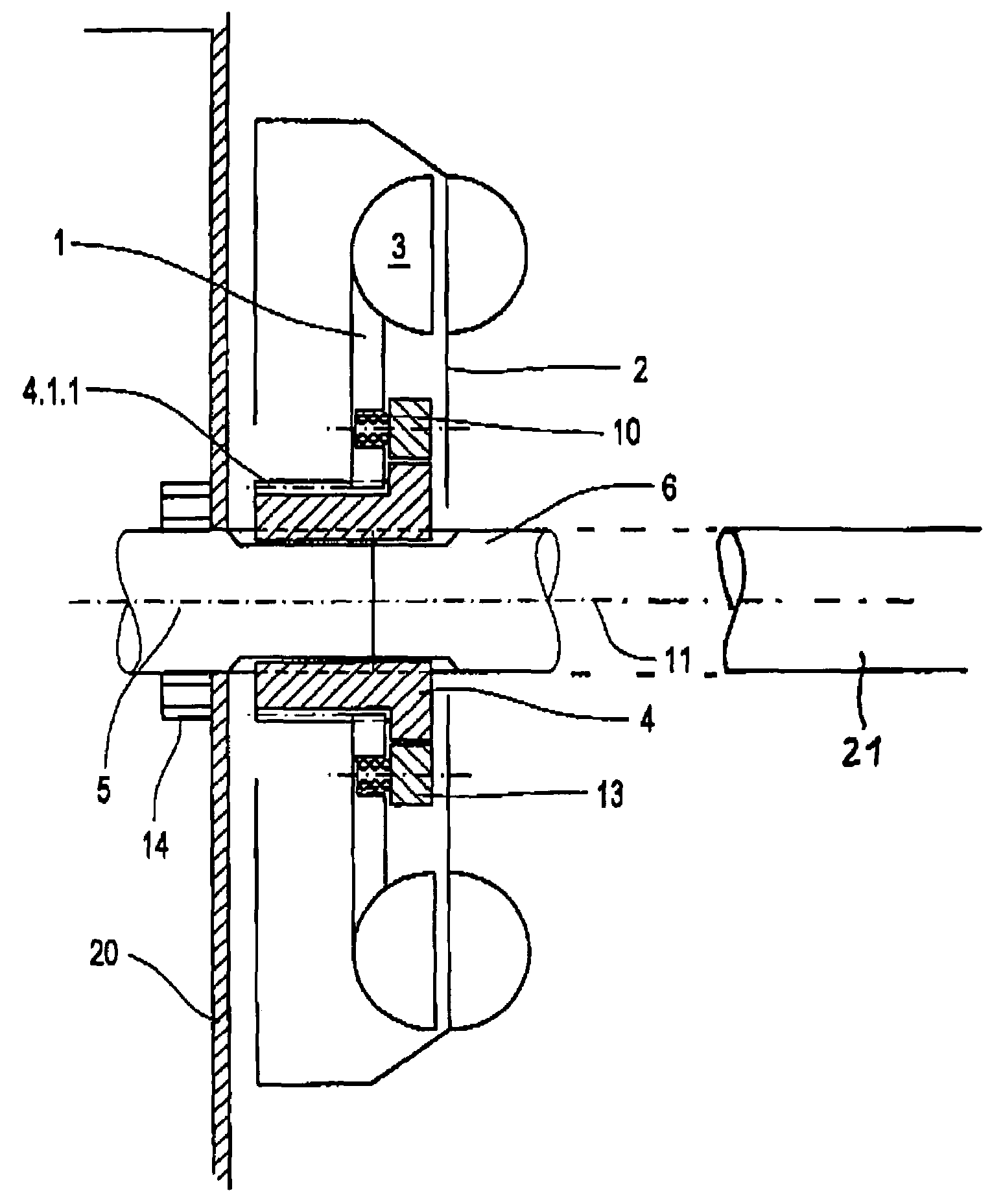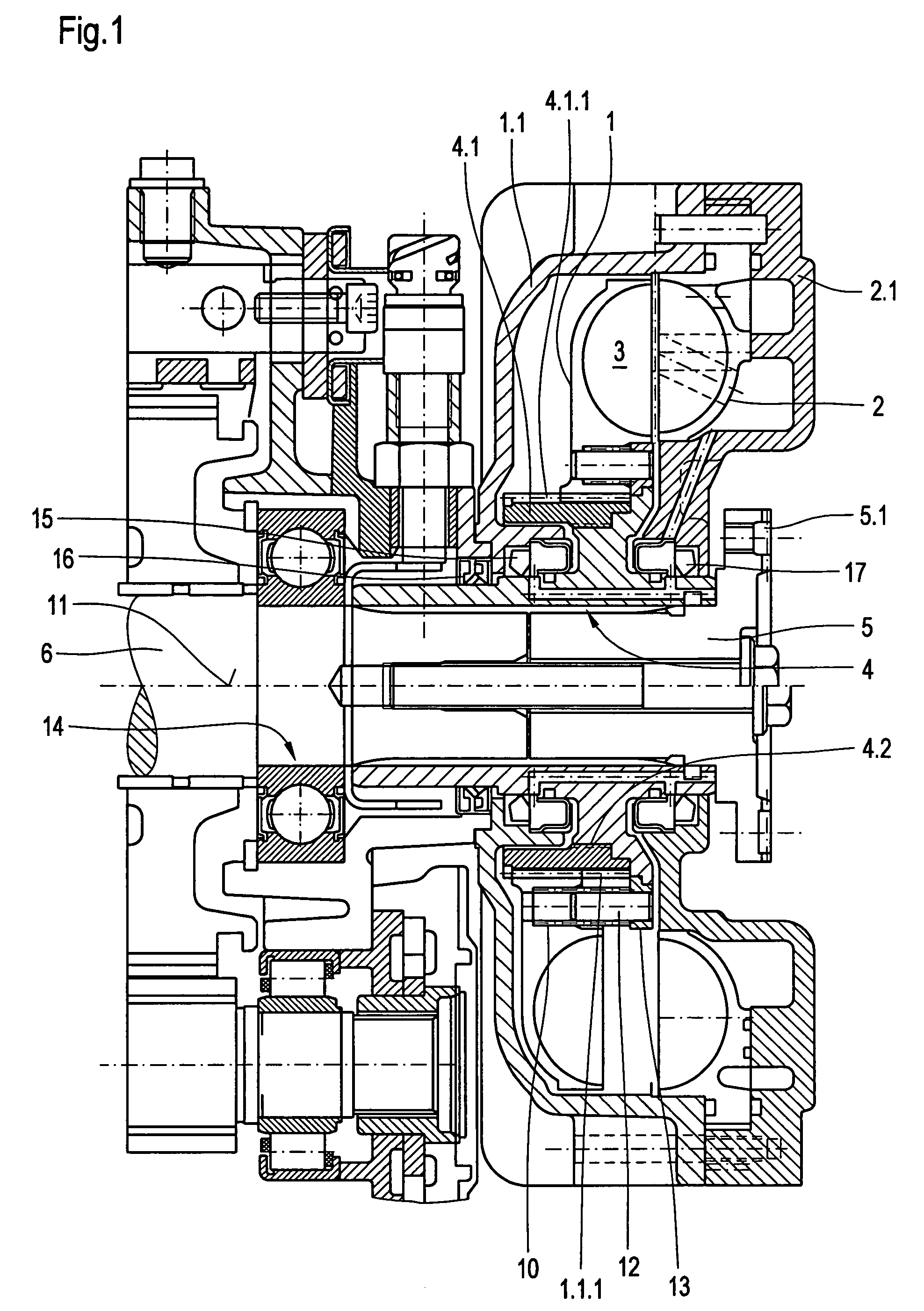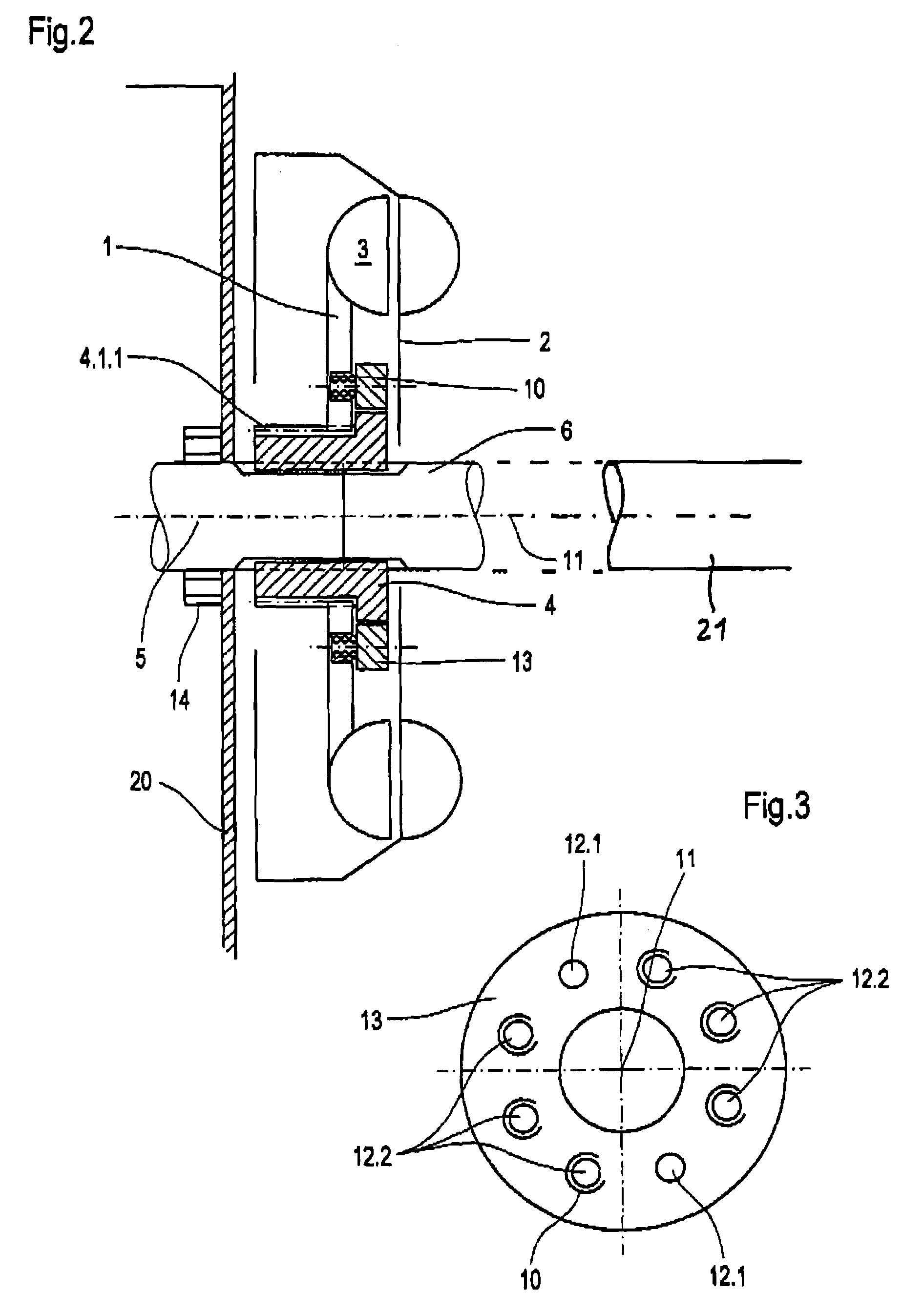Hydrodynamic brakes
a technology of hydraulic brakes and brakes, which is applied in the direction of fluid couplings, rotary clutches, couplings, etc., can solve the problems of increasing energy consumption, occupying a substantial amount of construction space, and the flow cycle in the working space between the pump wheel and the turbine wheel cannot effectively transfer the revolution momentum from the pump wheel to the turbine wheel, etc., to achieve stability of function and long life.
- Summary
- Abstract
- Description
- Claims
- Application Information
AI Technical Summary
Benefits of technology
Problems solved by technology
Method used
Image
Examples
Embodiment Construction
[0020]The rotor illustrated in FIG. 1 is made up as follows: a rotor 1 and a stator 2 are each of them developed as impeller wheels and form with one another a torus-shaped working space 3. The rotor sits upon a hollow shaft 4. This is torsionally firmly connected with a shaft 5 which is close to a prop shaft, which is not shown here, as well as a shaft 6 which is close to a transmission not shown here. The shaft 5 is insertable into the hollow shaft 4. It is provided with a flange 5.1 for the transfer of torsional momentum.
[0021]Stator 2 features a stator casing 2.1. rotor 1 features a rotor casing 1.1.
[0022]Rotor 1 is indirectly borne by the hollow shaft 4. The hollow shaft 4 for its part bears a ring follower 4.1. This features on its outside circumference a coarse-pitch screw thread 4.1.1. Rotor 1 is on its inside circumference provided with an appropriate coarse-pitch screw thread 1.1.1. The screw threads 4-1-1 and 1.1.1 work together with one another. They have a screw pitch t...
PUM
 Login to View More
Login to View More Abstract
Description
Claims
Application Information
 Login to View More
Login to View More - R&D
- Intellectual Property
- Life Sciences
- Materials
- Tech Scout
- Unparalleled Data Quality
- Higher Quality Content
- 60% Fewer Hallucinations
Browse by: Latest US Patents, China's latest patents, Technical Efficacy Thesaurus, Application Domain, Technology Topic, Popular Technical Reports.
© 2025 PatSnap. All rights reserved.Legal|Privacy policy|Modern Slavery Act Transparency Statement|Sitemap|About US| Contact US: help@patsnap.com



